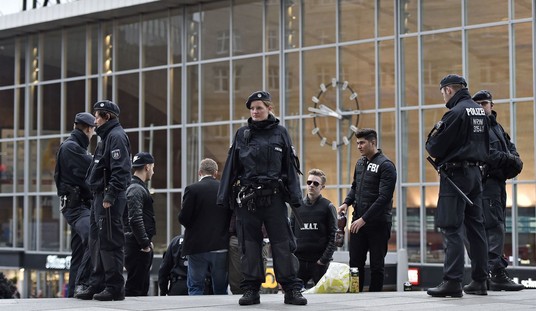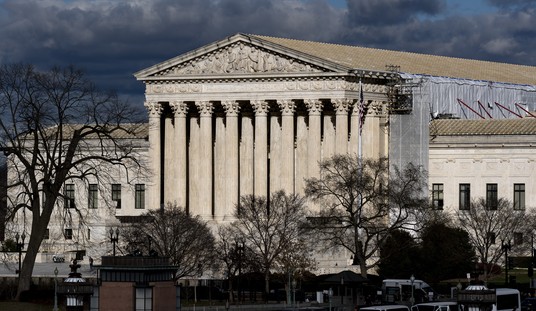We haven’t paid much attention to the IHME model lately but yesterday Scott Gottlieb flagged an ominous detail about it. For nearly two weeks, its estimate of the total U.S. death toll before August 4 has been revised upward — three separate times.
This graphic shows how the cumulative number of estimated U.S. covid deaths projected by the model have changed through the various updates. The latest 4/27 update to the model shows another increase in the projection for median cumulative deaths to 74,073. pic.twitter.com/pgDKhiCOif
— Scott Gottlieb, MD (@ScottGottliebMD) April 28, 2020
That trend finally shifted today as the new projection has dipped from 74,000+ to a shade under 73,000. But they may want to rethink that. The latest national daily death toll as compiled by the COVID Tracking Project is a single-day high for the United States to date, similar to the death toll on 9/11:
US daily numbers via @COVID19Tracking:
Newly reported deaths:
Today: 2,700*
Yesterday: 2,198
One week ago (4/22): 2,037Newly reported cases:
T: 28K
Y: 24K
4/22: 28KNewly reported tests:
T: 230K
Y: 202K
4/22: 314KShare of tests positive:
T: 12%
Y: 12%
4/22: 9%* New high
— Nate Silver (@NateSilver538) April 29, 2020
New cases are down from where they were two weeks ago but not dramatically. On weekdays in mid-April the U.S. was seeing about 30,000 new infections each day versus the 28,000 we’re seeing now. Which leads me to wonder if the current IHME projections aren’t waaaaay more conservative than they should be. If IHME is right, in light of the current total death toll of 55,000+, we should see “only” 18,000 more deaths over the next two months — and yet we’re still seeing fatalities at a rate of more than 2,000 per day.
If that keeps up, we’ll blow past the IHME projections for all of June and July in 10 days or so. No wonder Silver’s pessimistic:
Between the *current* wave of COVID-19 remaining bad in many states, the possibility of either a long plateau or a second wave, and states going back and counting deaths they missed originally, any projections that have 5-figure death tallies for the US this year seem optimistic.
— Nate Silver (@NateSilver538) April 29, 2020
The mystery about today’s numbers is whether they represent “new deaths,” “old deaths,” or some combination of the two. That is, how many people reflected in these numbers died overnight and how many died weeks ago but have since been reclassified from “unknown” to COVID-19 as their cause of death? There are a lot of them out there:

That’s 9,000 “excess deaths” across just seven states. Maybe some states have begun to go through their case files and include some of those excess deaths as coronavirus fatalities and that’s why today’s death toll is so ominously high. At least I hope that’s the reason. Last week’s numbers showed the daily death toll dipping below 2,000 for the most part, an encouraging sign that new deaths had begun to abate. If that trend has now reversed then consumers are going to be even more leery than we think to get back out there as businesses reopen.
We’re never going to answer the question of how many excess deaths are directly due to COVID, indirectly due to it, and not due to it at all. But let me share three pieces on the subject I’ve read since writing this post to flesh it out a little further. First, per Gallup, some people with symptoms who haven’t been tested might be avoiding treatment for the simple reason that they just can’t afford it:
One out of every seven (14%) U.S. adults report that they would avoid seeking healthcare for a fever and a dry cough for themselves or a member of their household due to concerns about their ability to pay for it. When framed explicitly as believing to have been infected by the novel coronavirus, 9% still report that they would avoid seeking care. Adults under 30, non-whites, those with a high school education or less and those in households with incomes under $40,000 per year are the groups most likely to indicate they would avoid seeking out care.
Anyone who failed to seek care and then died presumably wouldn’t be classified as a confirmed COVID death. Worse, when Gallup asked people if they’d sought medical treatment recently but been *denied* because of the heavy volume of coronavirus patients, fully six percent of Americans — 11 percent in the northeast — said yes. They weren’t all coronavirus patients, of course; some of them had elective treatments for other diseases scheduled and then canceled while doctors focused their energy on COVID. Some number of those people surely must have passed away over the past six weeks because they couldn’t get care in a timely way. They’re indirect casualties of the epidemic, people who won’t show up in official coronavirus death counts but will show up an “excess death” in all-cause mortality data.
Second, it’s hard to tell what the “baseline” of deaths should be at a moment when there’s a global pandemic happening alongside an economic deep freeze. There are excess deaths from the disease, of course, and also deaths of despair caused by economic hardship. (There are deaths of despair caused by the pandemic too.) But certain types of deaths that would be happening during normal times aren’t happening now because of social distancing.
With recessions come fewer people on the roads, which means fewer traffic accidents. And as we’re seeing now with worldwide lockdowns, less driving also means improved air quality. Since poor air quality is a public health crisis in its own right, the air cleanup caused by economic downturns could partly explain the reduction in deaths caused by respiratory and cardiovascular disease.
Less work also means fewer workplace injuries and more leisure time, which possibly leads to more exercise, more home cooking, and less money for booze and cigarettes…
It’s a complex picture. In some arenas, mortality rates decrease; in others, they rise. Based on historical patterns, the health benefits appear to outweigh the costs in terms of sheer numbers of deaths.
If a city expects 1,000 deaths a week in normal times and is experiencing 2,000 a week now, should we assume 1,000 are due directly or indirectly to coronavirus? Or some number greater than that since part of the “normal” death toll is attributable to things like auto accidents, etc, that aren’t happening much during lockdowns?
Third, ER doctor Jeremy Faust got tired of hearing COVID skeptics comparing the death toll from the virus to the death toll from the flu and started calling colleagues with a simple question. How many deaths from the flu had they personally seen in their time as a physician? Faust could recall one, a child. Some of his colleagues remembered a few, some remembered none. How can that be if tens of thousands of people are dying from the flu every year, as the CDC regularly assures us? The reason, says Faust, is that flu deaths are also estimates, and maybe not very good estimates. Anyone who’s treating the number of coronavirus deaths as a gassy projection but flu deaths as a matter of metaphysical fact is comparing apples to oranges.
The 25,000 to 69,000 numbers that Trump cited do not represent counted flu deaths per year; they are estimates that the CDC produces by multiplying the number of flu death counts reported by various coefficients produced through complicated algorithms. These coefficients are based on assumptions of how many cases, hospitalizations, and deaths they believe went unreported. In the last six flu seasons, the CDC’s reported number of actual confirmed flu deaths—that is, counting flu deaths the way we are currently counting deaths from the coronavirus—has ranged from 3,448 to 15,620, which far lower than the numbers commonly repeated by public officials and even public health experts.
Faust compared the number of coronavirus deaths in the second week of April this year to the worst week of reported flu deaths over the past seven years in the U.S. Result: COVID killed 9.5 to 44 times as many people as the flu did at its worst. And those are only confirmed cases. Toss in “excess deaths” as presumptively caused, directly or indirectly, by the virus and the number would be higher.
Anyway, all of this makes a fine argument that it’s still too early to reopen for business but there’s a compelling, almost unanswerable counterargument. The new unemployment numbers will be out in less than 12 hours.







Join the conversation as a VIP Member